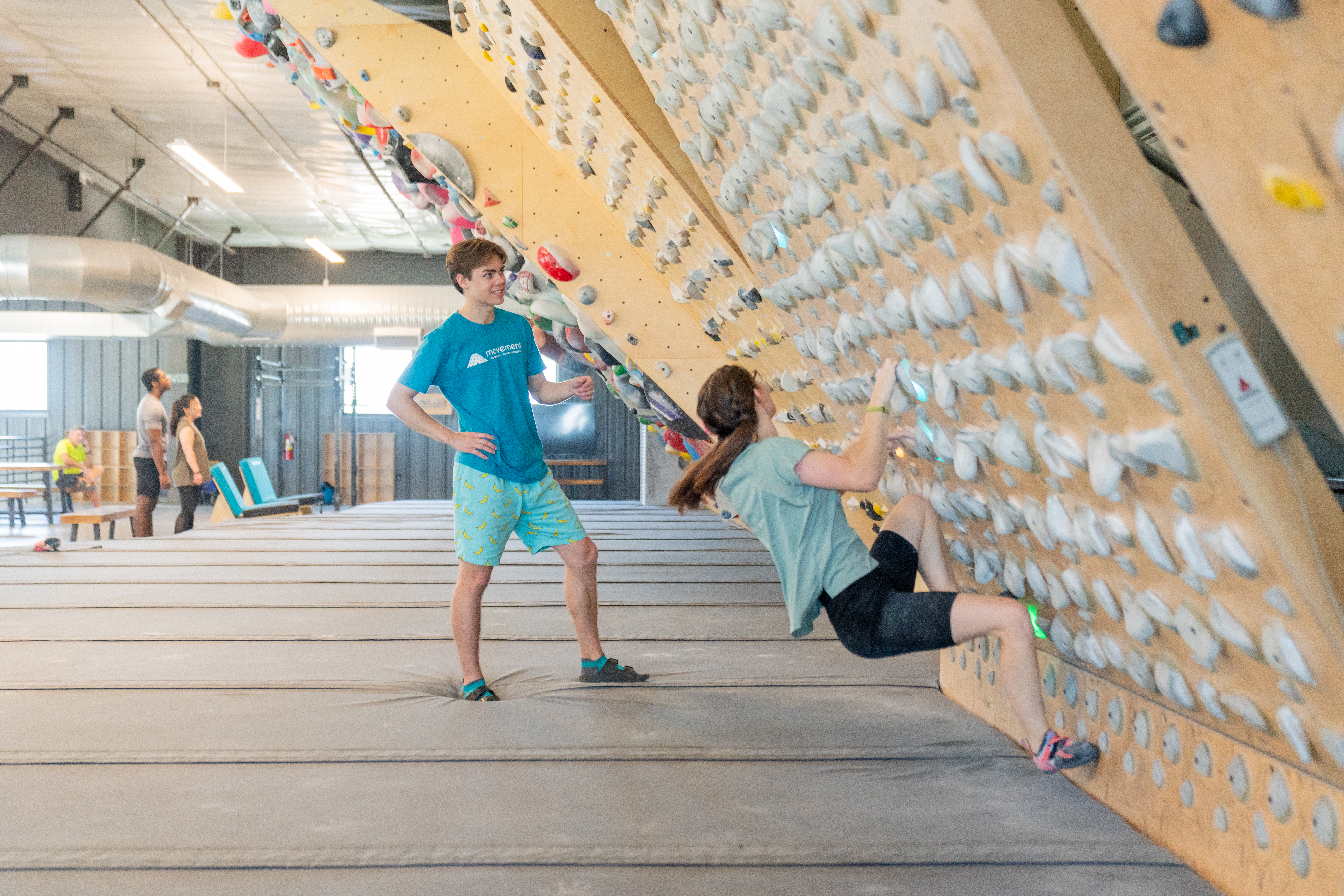Conquering Climbing Plateaus with Peak Performance Training
Stalling out is seemingly the most normal thing that can happen to a person in climbing, but that doesn’t make it any less frustrating, and it certainly doesn’t make it easier to fix. In early 2022, I was stuck on the Dinner Ledge of plateaus and searching for a way to improve, when my friend and climbing partner let me know that Movement Sunnyvale was starting up Peak Performance Training (PPT). I decided that getting professional coaches involved was a solid plan, so I signed up.
Developing Advanced Climbing Techniques with Personalized Coaching
For nearly two years, I met weekly with coaches and a small group of climbers to work on every aspect of climbing—from the physical to the psychological. We learned how to execute and perfect the basic skills, including grips on different types of holds, footwork, heel and toe hooks, body positioning, and maintaining straight arms. These foundational skills were then expanded to more advanced techniques, like dynos, sequencing, and projecting. We also learned how to warm up properly, breathe for different outcomes, and give full effort. On top of that, we spent time on the mental aspects of climbing, like goal-setting, focus, and self-talk.
Each PPT session began with a warm-up, usually designed by the coaches to prepare for the evening’s primary task. We would then have a short instructional period, followed by climbing exercises to practice the evening’s skills. The sessions were structured into 6 to 8-week learning units. For example, we’d focus on footwork for several weeks, then transition to building endurance, and then focus on breathing. Occasionally, we’d revisit a topic in a subsequent unit to reinforce and build upon previous skills. At least once a month, we would have a projecting session, during which the coaches would watch, encourage, and give individual feedback about our progress.
The participant-to-coach ratio never exceeded 6:1, so there was plenty of individual coaching attention. However, I also valued the time spent with other team members. We varied in skill levels, but everyone was there to improve, and we encouraged and supported each other throughout the process. Many of my team members became friends, and we’ve since gone on climbing trips together to Moab and Mexico, hung out and played board games, and climbed together outside of class.
The Challenges of Climbing Training & Building My Climbing Toolbox
But PPT wasn’t always easy— or even enjoyable. It was difficult to drag myself to an intensive two-hour class after a long workday. There was plenty of Type II fun –like doing up-down-ups until you fall off the wall (endurance training) or hands-free climbs in street shoes (footwork training). Sometimes, it felt like I was the last one to learn a skill. And after I sailed past that 2022 plateau, I found another one. And then another.
The difference now is that I have a vast toolbox to work my way out of stall-outs, and I have come to accept that plateaus, fear, and frustration are all part of the beta. It turns out that climbing is a really hard sport, and it’s nice to have some help. I will always be grateful for my PPT toolbox and for my cadre of new gym friends to continue to improve with.
Erin Haynes (Movement Sunnyvale)
Shoutout to Jessica, Sierra, Matt, Joe, and Jaydang for all of the fantastic coaching! Each of you gave me unique and important tools to work with. @Joe, I gave this essay full beans!
Interested in Peak Performance Team? Find a Movement Gym near you to get started!

